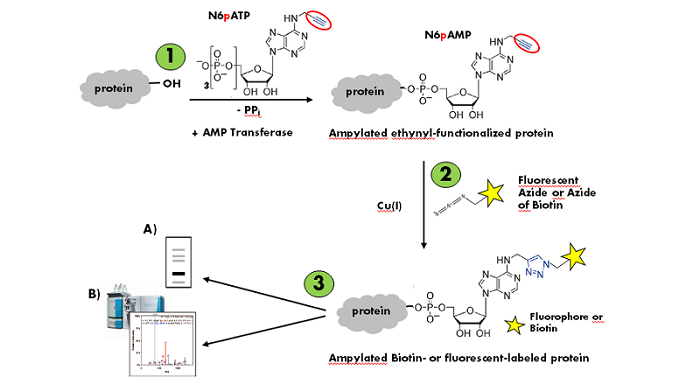AMPylation is a recently discovered post-translational modification that is characterized by the covalent modification of protein hydroxyl groups (serine, threonine or tyrosine) with adenylyl 5ʹ-monophosphate (AMP) catalyzed by specific AMP transferases[1,2]. The traditional method for the selective tagging of AMPylated proteins relies on a combination of radioactive labeling with 32P-alpha-ATP and targeted mass spectrometry.
Grammel et al.[1] reported a non-radioactive version of in vitro AMPylation were an Alkyne-modified ATP (N6-Propargyl-ATP (N6pATP)) has been sucessfully used to ampylate both purified proteins as well as proteins in cellular extracts. The resulting ampylated substrates can subsequently be labeled via Cu(I)-catalyzes click chemistry that offers the choice

Figure 1: Workflow of in vitro AMPylation of proteins with N6-Propargyl-ATP (N6pATP) (modified according to [1]).
Step 1: Enzymatic AMPylation and simultaneous ethynyl-functionalization of the substrate protein. Step 2: Cu(I)-catalyzed Labeling of the ampylated ethynyl-functionalized substrate protein. Step 3: Detection via A) in-gel fluorescence analysis or B) mass spectrometry.
[1] Grammel et al. (2011) A Chemical Reporter for Protein AMPylation. J. Am. Chem. Soc. 133:17103.
[2] Broncel et al. (2012) A New Chemical Handle for Protein AMPylation at the Host-Pathogen Interface. ChemBioChem 13:183.